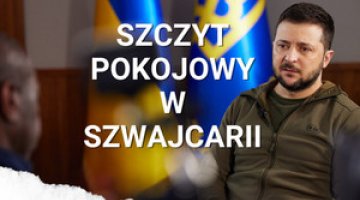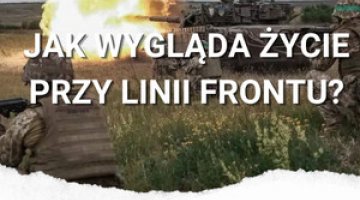Ukraine: The Maidan at a crossroads
The past two to three weeks have shown that the protests on the Maidan are clearly losing steam. The last mass meeting, excluding New Year’s Eve, took place on Saturday 29 December under the slogan ‘Solidarity against terror’ as an expression of opposition to the severe beating of journalist Tetiana Chornovil. The weakening of social mobilisation has been accompanied by a process of institutionalisation of the protest movement. The political parties and the non-governmental sector agreed on 23 December to call an ‘All-Ukrainian Maidan’ (AUM), with the aim of becoming a social movement seeking to change the situation in Ukraine. However, this took place in an atmosphere of barely concealed tension between the political parties and the social activists. The AUM has declared that it is willing to negotiate with the authorities, who on the one hand are trying not to escalate tensions but reduce the temperature of the political dispute, while on the other they seem unready for any genuine, meaningful discussion with the opposition.
Fading protests
Tetiana Chornovil, a well-known Ukrainian journalist and social activist, was severely beaten by unknown assailants on the night of 24 to 25 December. The authorities launched an investigation into the matter, arrested five people and interviewed over 50 witnesses. Currently, it is difficult to say who was behind the assault. The opposition has indicated that it was probably linked to representatives of the Ukrainian government, whose abuses and property holdings Chornovil had exposed in her writing. The assault on Chornovil is the most serious of the attacks on social activists and journalists during the Euromaidan protests. In recent days, more and more information has come out regarding the harassment, intimidation and beatings of representatives of these groups in different Ukrainian cities.
The attack on Chornovil influenced the reactivation of social mobilisation. As public opinion polls conducted among the demonstrators in mid-December show, aggression against innocent people (the beating of students on the night of 30 November) has become the main motivation bringing Ukrainians out onto the street. Nevertheless, the size of the protests in Kyiv can be expected to weaken, as confirmed by the constantly decreasing number of protesters. In the next few weeks, anywhere from a few hundred to two to three thousand people, mostly activists and party activists, will probably remain on the Maidan and in the nearby buildings. We may also expect the number of protesters to increase at the weekends.
The government’s tactics: ignore and harass
Since 11 December the authorities have not resorted to the use of force, as they hope for the protests to expire of their own free will, and try to ignore the demonstrators. Despite signals from the opposition that they are ready for dialogue, there is no indication that the authorities will undertake any real talks with them. At the same time, the opposition has reported both harassment against individual participants in the protests and attempts to disorganise the Maidan’s technical support at the union headquarters (including blocking transports of food and fuel). The authorities have been harassing the protesters in this way, while the opposition is likely to exaggerate such incidents in order to maintain the protesters’ motivation. However, it cannot be excluded that the authorities are actually taking action to remove the blockade of the Khreshchatyk, or to clear the buildings of the trade union HQ and the Kyiv city hall; however, such a move would be risky because of the need to use force, which in turn could bring about a resurgence in the protests.
Unclear prospects for institutionalising the Maidan
On 23 December, opposition politicians and representatives of civil society organisations initiated a social movement called the ‘People’s Union of the Maidan’, which was then transformed into the ‘All-Ukrainian Maidan’ (AUM). The founding of the AUM is an attempt to formalise the protests centred on Kiev’s central Maidan square, which have now been going for over a month, by creating an instrument to bring pressure onto the ruling camp. The plan for further action by the movement remains unclear; declarations were made that centres of the AUM would be established in the regions of Ukraine, whose task will be to monitor the authorities in the regions. On 29 December, the AUM passed a manifesto containing political demands against the rulers, including the following: the release and rehabilitation of all arrested protesters, an end to harassment, the resignation of Interior Minister Vitaly Zakharchenko and the entire Azarov government, and the liquidation of the Berkut special forces. Soon the AUM Council is expected to approve a delegation whose task will be to conduct negotiations with the authorities. The issues of signing an association agreement with the EU and preventing Ukraine’s integration with the Customs Union also remain on the agenda. Meanwhile, the question of releasing Yulia Tymoshenko from prison is becoming increasingly marginal. The long-term objectives are the adoption of a new constitution, early parliamentary elections and amendments to the electoral law.
The AUM consists of a 40-person board including politicians, social activists and cultural figures, as well as a seven-person presidium which currently consists of one representative each from the UDAR, Batkivshchyna and Svoboda parties (each of them a middle-ranking politician) and four representatives of the NGO sector. Ruslana, a popular singer involved in organising the protests, was named coordinator of the presidium. A regional congress of the ‘Euromaidans’ is planned for 11-12 January in Kharkiv, the aim of which is to further the institutionalisation of the protest movement. Among the meeting’s objectives are the preparation of a plan of action and the creation of mechanisms to coordinate the ‘Maidans’ in different cities.
However, it is doubtful how effective the AUM will be in future, because of the conflicting interests and lack of mutual trust between the politicians and the social activists. Friction between these groups was already apparent during the appointment of the leadership. The social activists, not without reason, suspect the politicians of wanting to exploit the potential of the protests for their own political purposes. Tensions are also visible between the three main political parties. Vitali Klitschko and Arseniy Yatsenyuk are competing for the status of the main opposition candidate in next year’s presidential elections; and for his part Oleh Tiahnybok, who will also probably participate in these elections, is aiming at the further radicalisation of public sentiments in Ukraine. While the opposition party politicians are putting on a show of unity to the outside world, they will nevertheless seek to take control of the AUM. They see this movement not so much as an equal ally in putting long-term pressure on the authorities to carry out systemic changes in the country, but rather as a potentially effective instrument for mobilising the public during the presidential elections in 2015. The Maidan protests, which have gone on for more than a month now, have effectively caused the actual preparations for the elections to begin already. Therefore, in the next few weeks we may expect a rise in tensions between the different elements of the AUM, as well as disputes regarding tactics, and the occurrence of uncoordinated actions.




